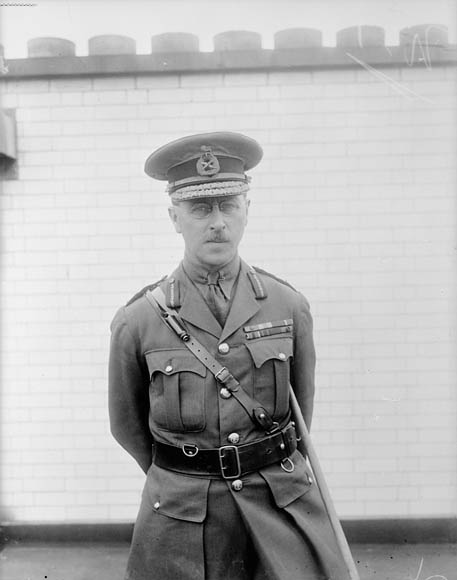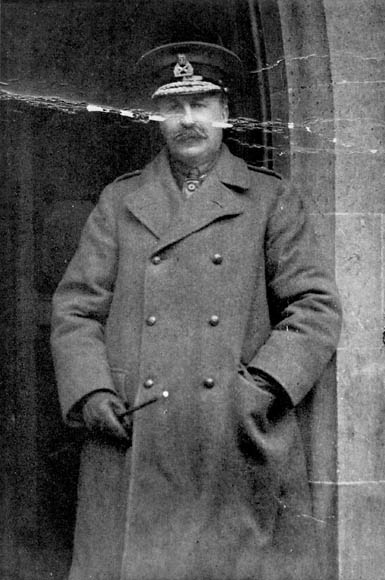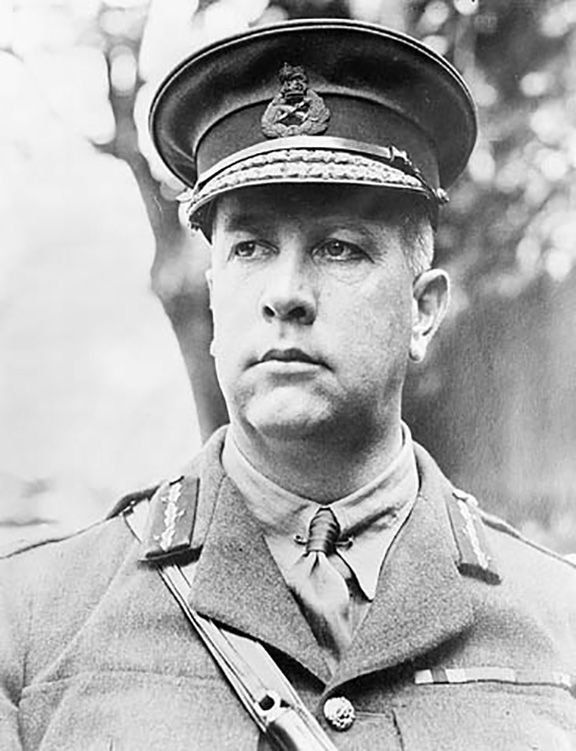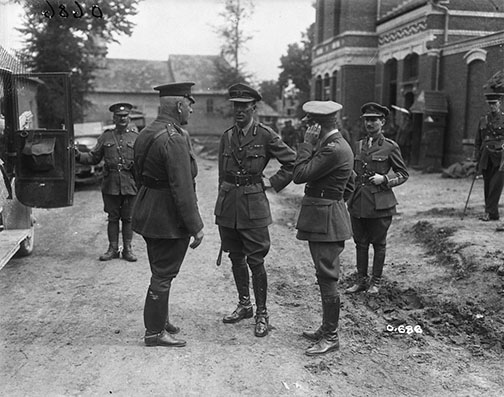Festubert, 1915

Image of a German parapet, photographed near Festubert, France. 1915.
Credit: Canada. Dept. of National Defence/Library and Archives Canada/PA-005760. Photographer: Lamb, Henry John, b. 1871; (MIKAN no. 3329315)
First World War
Date
15-25 May 1915
Geographical parameters
The La Bassée Canal to Gorre: thence road to le Touret – Lacouture – Croix Barbée: thence a line to the Bois de Biez (Southwest corner)
Context
A battle honour incorporating the tactical incidents “Second Action of Givenchy, 1915”, “First Attack on Bellewaarde”, and “Actions of Hooge”, formally entitled the “Battle of Festubert”, and itself being part of “The Battles of Ypres”.Footnote 1
Description
The Honour “Festubert, 1915” was one of three offensives launched by the British in the First Army Sector to relieve pressure on Ypres to the north and the French attacks on Vimy Ridge to the South. The 3rd Canadian Brigade (Brigadier-General R.E.W. Turner, VC) was the first Canadian formation engaged in the fighting when it was assigned to support the British 7th Division's attack on 18 May. The 3rd Brigade had reduced a gap in the line between the British 2nd and 7th Divisions. During the night of 18-19 May the 2nd Canadian Brigade (Brigadier-General A.W. Currie) relieved the remainder of the 7th Division and General Alderson prepared the Canadian Division (Lieutenant-General E.A.H. Alderson) to continue the offensive. The Canadian Division's attacks on the 20th and 21st were conducted in cooperation with the 51st Highland Division on its left. Unfortunately, there was little success due to poor artillery support and a stubborn German defence with effective artillery and counter-attacks. Grouped with the 47th British Division on its right and with a six-hour bombardment of German lines, the First Canadian Division conducted another attack on 24 May only to find that the artillery had not silenced the German machine guns. The last Canadian involvement in the attack was a group of dismounted cavalrymen from the Canadian Cavalry Brigade (Brigadier-General J.E.B. Seely) known as the “Seely's Detachment”. The Brigade had volunteered for this service due to the heavy casualties in the First Canadian Division. On the evening of 25 May, with no training in trench warfare, they attacked alongside the British 47th Division and did take some ground that was consolidated by parties of the 2nd Brigade. During their many attacks the Canadians had taken 600 yards of ground across a mile wide front, taking some German defences, but had not reached their objectives or the German front line. The cost was 2468 casualties. These battles highlighted the problems of allied artillery and tactics of attack while demonstrating the effectiveness of German artillery, machine guns, trench mortars and stick grenades.

Lieutenant General R.E.W. Turner, V.C. Location unknown. 1914-1919.
Credit: Canada. Department of National Defence/Library and Archives Canada/PA-007941 (MIKAN no. 3221894)

Lieutenant-General Edwin Alfred Hervey Alderson (1859-1927), commander First Canadian Division (1914-15), commander Canadian Army Corps (1915-16), inspector-general, Canadian forces (1916-18). Location unknown. 1915.
Credit: Library and Archives Canada/C-49485; (MIKAN no. 3212819)

General Currie, Commander of the Canadian troops in France, and A.D.C. Location unknown. June, 1917.
Credit: Canada. Department of National Defence/Library and Archives Canada/PA-001370 (MIKAN no. 3191901)

Gen. Sir Sam Hughes (left fore) visiting the Front, talking with Brig.-Gen. Seely (middle fore). Aug. 1916. Location unknown.
Credit: Canada. Department of National Defence/PA-000599Library and Archives Canada/PA-000599; (MIKAN no. 3221015)
Awarded to:
Currently serving units
- 48th Highlanders of Canada
Awards to the 15th Canadian Infantry Battalion, CEF (GO 110/29) and The 48th Regiment (Highlanders) (GO 110/29) - 56th Field Artillery Regiment, RCA
Awards to the 4th Canadian Infantry Battalion, CEF (GO 110/29) and The Dufferin Rifles of Canada (GO 110/29) - The Algonquin Regiment
GO 88/31 - The Black Watch (Royal Highland Regiment) of Canada
Awards to the 13th Canadian Infantry Battalion, CEF (GO 110/29) and The Royal Highlanders of Canada (GO 110/29) - The British Columbia Regiment (Duke of Connaught's Own)
Awards to the 7th Canadian Infantry Battalion, CEF (GO 71/30), the 1st British Columbia Regiment (Duke of Connaught's Own) (GO 110/29), The North British Columbia Regiment (GO 123/29), and The Irish Fusiliers of Canada (GO 71/30) - The Calgary Highlanders
Awards to the 10th Canadian Infantry Battalion, CEF (GO 123/29) and The Calgary Highlanders (GO 110/29) - The Canadian Grenadier Guards
GO 110/29 - The Canadian Scottish Regiment (Princess Mary's)
Awards to the 16th Canadian Infantry Battalion, CEF (GO 110/29) and The Canadian Scottish Regiment (GO 110/29) - The Essex and Kent Scottish
Award to The Essex Scottish (GO 110/29). - Les Fusiliers Mont-Royal
Award to Les Carabiniers Mont-Royal (GO 71/30) - Governor General's Foot Guards
Awards to the 2nd Canadian Infantry Battalion, CEF (GO 123/29) and The Governor General's Foot Guards (GO 32/32) - The King's Own Calgary Regiment (RCAC)
Award to The Calgary Regiment (GO 110/29) - The Lake Superior Scottish Regiment
Award to The Lake Superior Regiment (GO 110/29) - The Lincoln and Welland Regiment
GO 71/30 - Lord Strathcona's Horse (Royal Canadians)
GO 88/31 - The Lorne Scots (Peel, Dufferin and Halton Regiment)
Award to The Peel and Dufferin Regiment (GO 71/30) - The North Saskatchewan Regiment
Awards to the 5th Canadian Infantry Battalion, CEF (GO 110/29), the 16th Canadian Light Horse (GO 110/29) and The Saskatoon Light Infantry (GO 110/29) - The Nova Scotia Highlanders
Award to The Pictou Highlanders (GO 71/30) - The Queen's Own Cameron Highlanders of Canada
GO 110/29 - The Queen's Own Rifles of Canada
Awards to the 3rd Canadian Infantry Battalion, CEF (GO 123/29) and The Queen's Own Rifles of Canada (GO 110/29) - The Queen's York Rangers (1st American Regiment) (RCAC)
Award to The York Rangers (GO 71/30) - The Royal Canadian Dragoons
Award to The Royal Canadian Dragoons (GO 5/31). - The Royal Canadian Regiment
Awards to the 1st Canadian Infantry Battalion, CEF (GO 110/29) and The Canadian Fusiliers (City of London Regiment) (GO 110/29) - The Royal Hamilton Light Infantry (Wentworth Regiment)
Awards to the 4th Canadian Infantry Battalion, CEF (GO 110/29) and The Royal Hamilton Light Infantry (GO 110/29) - The Royal Montreal Regiment
Awards to the 14th Canadian Infantry Battalion, CEF (GO 110/29) and The Royal Montreal Regiment (GO 110/29) - The Royal New Brunswick Regiment
Award to The York Regiment (GO 71/30) - The Royal Regiment of Canada
Awards to the 3rd Canadian Infantry Battalion, CEF (GO 123/29), The Royal Grenadiers (GO 110/29) and The Toronto Regiment (GO 110/29) - The Royal Winnipeg Rifles
Awards to the 8th Canadian Infantry Battalion, CEF (GO 110/29), the 10th Canadian Infantry Battalion, CEF (GO 123/29), The Winnipeg Light Infantry (GO 110/29) and The Winnipeg Rifles (GO 110/29) - The Seaforth Highlanders of Canada
GO 5/31 - The South Alberta Light Horse
Award to The Edmonton Fusiliers (GO 71/30)
Units on the Supplementary Order of Battle
- 7th Anti-Aircraft Artillery Operations Room, RCA
Award to the 5th British Columbia Light Horse (GO 71/30) - 12th Manitoba Dragoons
GO 71/30 - 14th Canadian Hussars
GO 5/31 - 50th Field Artillery Regiment (The Prince of Wales' Rangers), RCA
Awards to the 2nd Canadian Infantry Battalion, CEF (GO 123/29) and The Peterborough Rangers (GO 110/29) - 65th Field Battery, RCA
Award to the 18th Canadian Light Horse (GO 71/30) - The Perth Regiment
GO 71/30 - Royal Rifles of Canada
GO 71/30 - The Victoria Rifles of Canada
Award to The Victoria Rifles of Canada (GO 110/29) - The Winnipeg Grenadiers
GO 110/29
Disbanded Units
- 3rd (Reserve) Searchlight Battery (Coast Defence), RCA
Award to the 5th British Columbia Light Horse (GO 71/30)
Page details
- Date modified: